Rochester Museum and Science Center Exhibit





Abstract
The RMSC team was tasked with creating an interactive exhibit that would teach visitors of the Rochester Museum and Science Center about some scientific concept. Intrigued by what they had learned in their vibrations and fluid dynamics classes, they combined the two concepts to create a display which would showcase the beautiful natural patterns formed in fluids when vibrated at some frequency. The team designed a system using sound equipment (subwoofer, amplifier, and frequency generator) and a cylindrical polycarbonate container filled with silicon oil. The prototype was built and tested at RMSC with museum guests. It was then revised once more after seeing how users interacted with it.
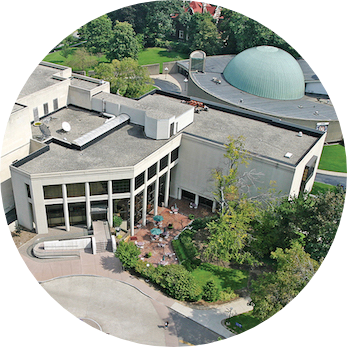
The mission of the RMSC is to inspire a better future for all through curiosity, exploration, and participation in science, culture, and the natural world.
Rochester Museum & Science Center Mission Statement
Problem Statement
Children do not have a complete understanding of certain science concepts in their surroundings, which can be improved by exposure to scientific topics through an interactive experience. The goal of the vibrational fluids exhibit is to enhance the range of experience of RMSC visitors by exposing them to the concept of vibrations in an engaging and interactive manner. This exhibit aims to allow children and families to experience first-hand the laws which govern our universe and how simple physics concepts like natural frequencies and fluid dynamics can be combined to create interesting pattern designs.
Requirements
- Designed for families with children ages 5-14 years.
- Can be operated by someone without any prior knowledge of the design.
- Interactive and offers sensory stimulation in a social context to the audience.
- Must be approved as safe and user-friendly by staff at RMSC.
- Due to the pandemic, the exhibit will be able to be assembled and built-in sections to completion.
- Must be iterative; a prototype must first be tested with the public before moving onto the 2nd stage prototype
Specifications
- Must fit within the given 5′ by 5′ floor space.
- Must leave navigation space in straight and turning hallways of a maximum of 42” long and a maximum of 48” wide.
- Must leave room for wheelchair and foot traffic navigation with a turning space of 60” diameter or a T-shaped space.
- Must have a minimum circulation space of 60” between one exhibit and any adjacent ones.
- Must have a maximum height of 48” (from the floor to the top of the exhibit).
- Stipulated course budget of $1000 from the University of Rochester.
- Must fit those requirements that are appropriate per the Universal Design and Development Plan.
Design Components & Assembly
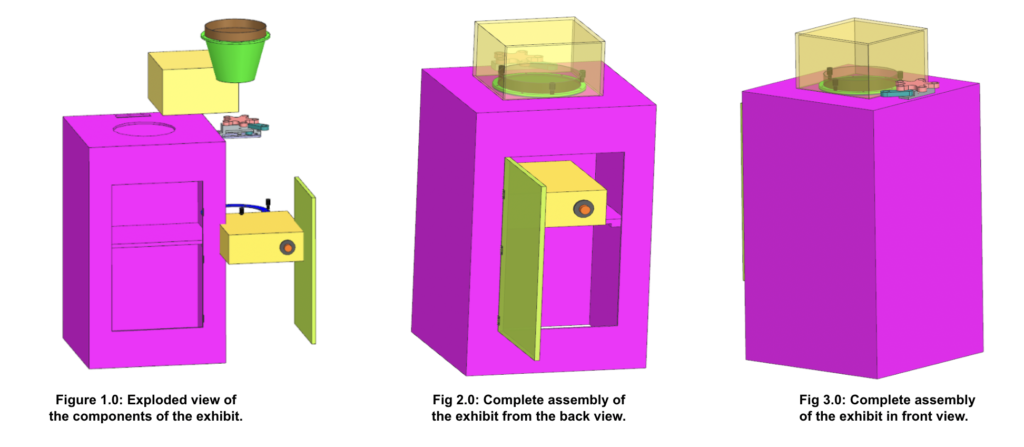
Materials
| Polycarbonate | display case & fluid container | durable & water-tight |
| Medium Density Fiberboard (MDF) | base | easy to manufacture and low cost |
| ABS | dials & amplifier casing | easy tomanufacture, lightweight, durable |
On-Site Prototyping

Prototyping Observations:
- Adult audience:
- Were less inclined to play around with the dials
- Teen audience:
- Some students made very accurate observations
- Younger audience:
- Played with the dials and knobs in a more intuitive manner
Design Changes Needed:
- Need to hide the on/off switch of the amplifier
- Need to change how we constrain the dials
Design Modifications
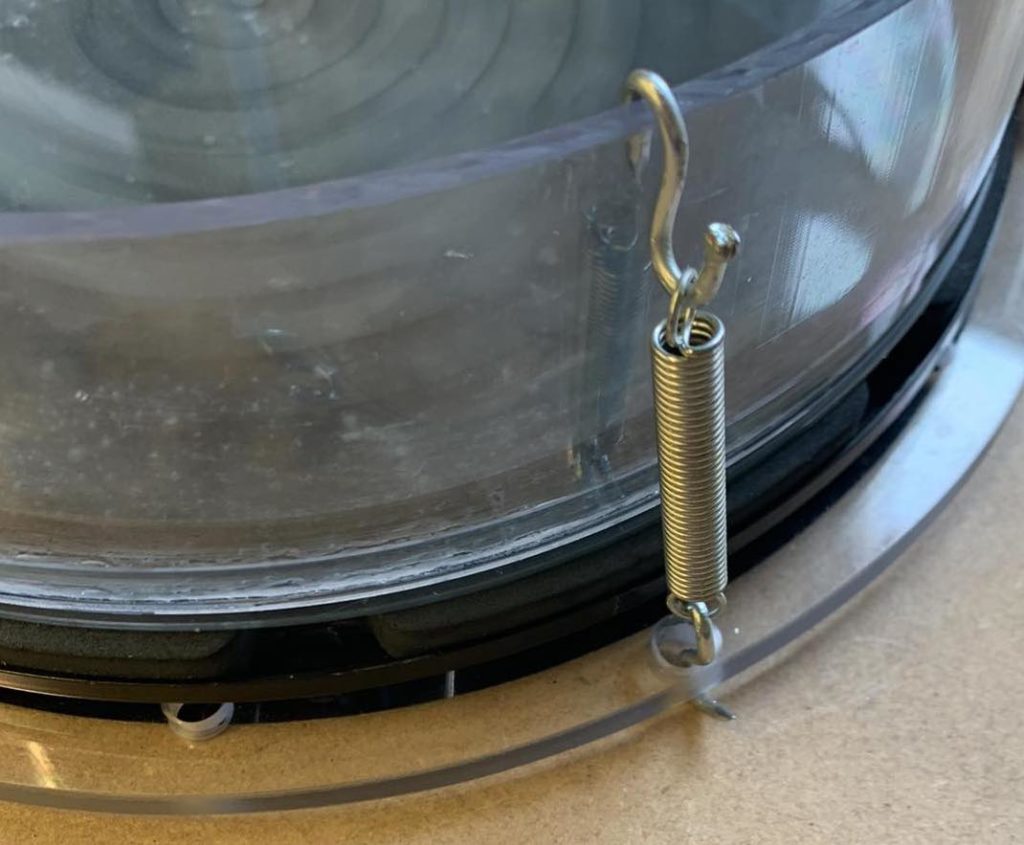
Observation:
The fluid container was initially vibrating a lot vertically, causing the patterns to not form uniformly and also causing a lot of noise
Solutions Considered:
- Magnets
- Rubber bands
- Springs held with hinges
Design decision:
The springs solution proved to work the best after testing
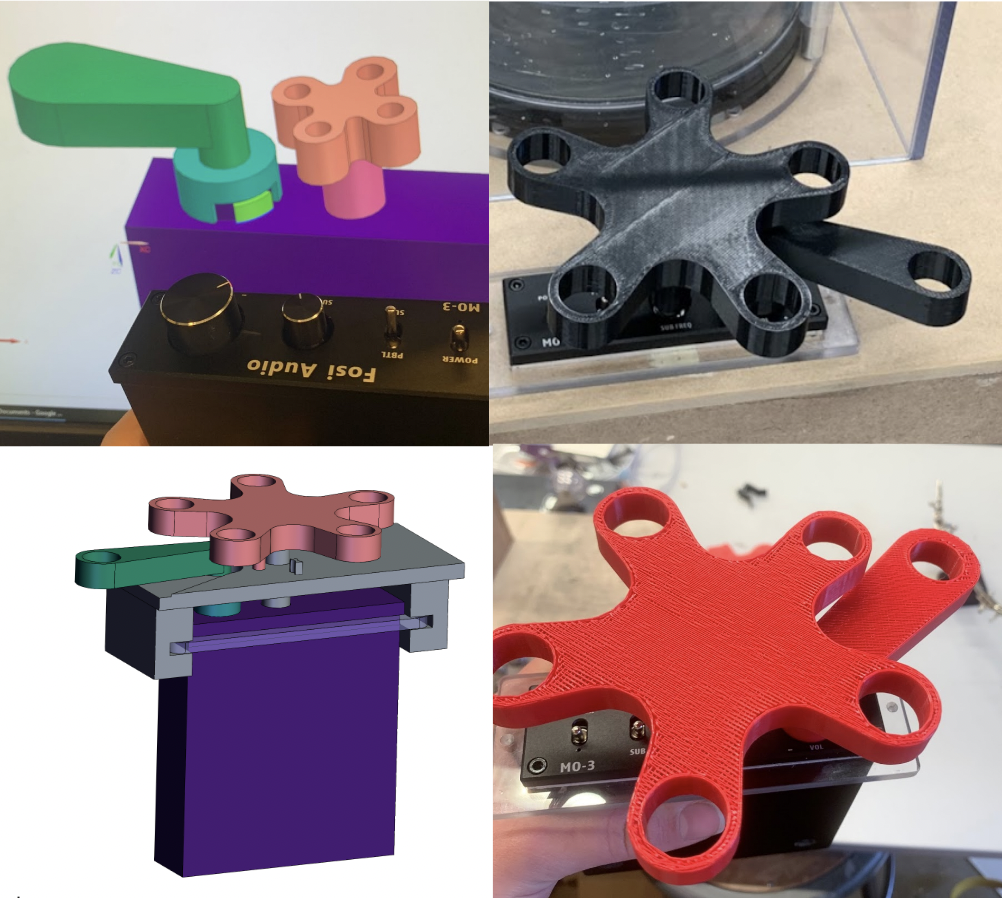
Observation:
The younger audience tended to break the volume dial and had access to the on/off switch. They also turned the frequency dial all around, which distracted them from noticing the correlation between the frequency changes and the wave patterns.
Solutions Considered:
- Suspending the amplifier below the base opening
- 3D-printing an amplifier cover to block access to the switch and improve the structural integrity of the volume dial
- Incorporate a stopper for the frequency dial
Design decision:
The ideas above were combined in a design that includes an amplifier cover and slots to control the turning range of both dials (bottom left)
Limitations
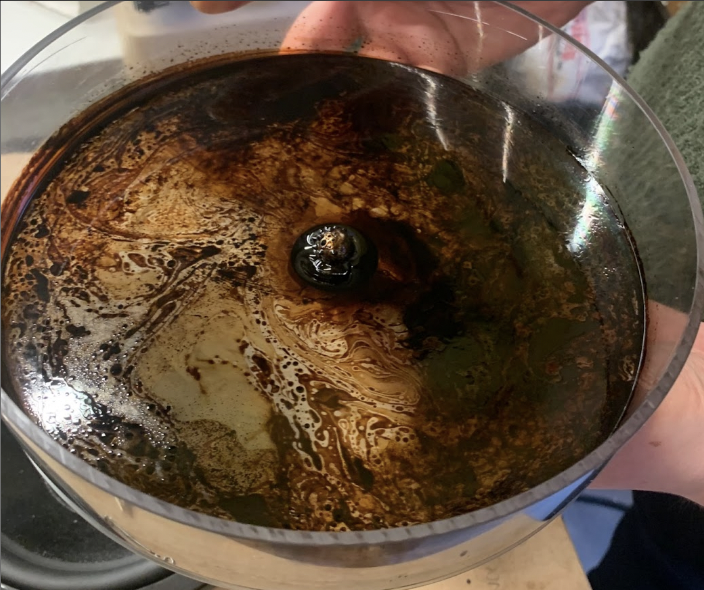
The initial design included the use of ferrofluid to show the patterns of the
vibrations. However, during testing, the ferrofluid mixed with the main fluid rather than adhering to the magnet placed in the center. Because of this, the team decided the best fluid choice would be silicon oil and the ferrofluid should be omitted.
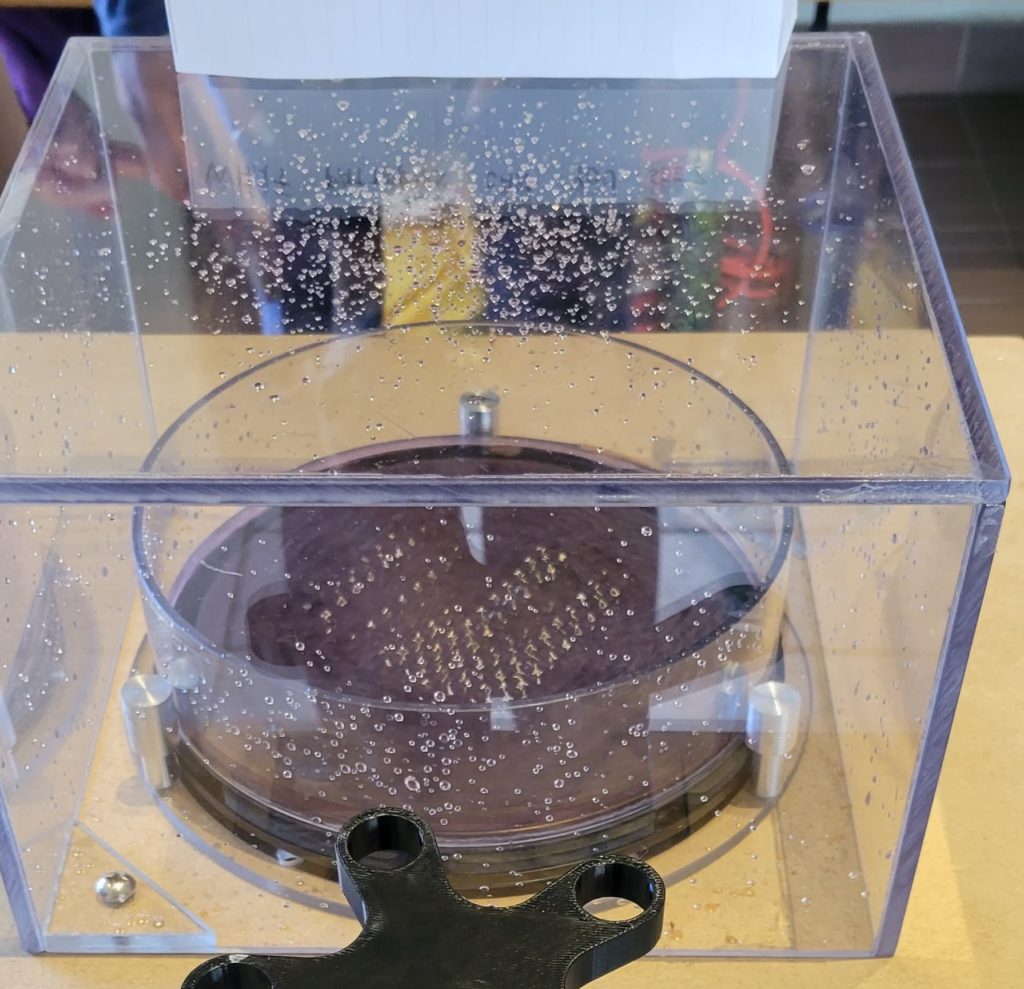
The polycarbonate components needed to be adhered using chemical welding. This process involved toxic chemicals and was beyond the team’s skills and expertise, so professional help was necessary.
Design Presentation
Future Work
Currently, the exhibit is limited to one type of fluid, silicon fluid, with a viscosity of 5.0 centistokes (cSt). Moving forward, one recommendation would be to increase the range of fluids used in the exhibit with respect to their viscosity. This would allow the individuals interacting with the exhibit to observe that as the fluid viscosity increased, the waves propagated through it would almost appear stationary and in other instances no motion within the fluid would be evident. Another recommendation would be to use a musical instrument such as the piano, that produces similar tones and to observe their vibration effects on the fluid. Lastly, it would be worthwhile to incorporate media elements such as a high definition camera and projector. The Cymascope is a device that has allowed for this observation in purified water and could equally be integrated into this exhibit.
